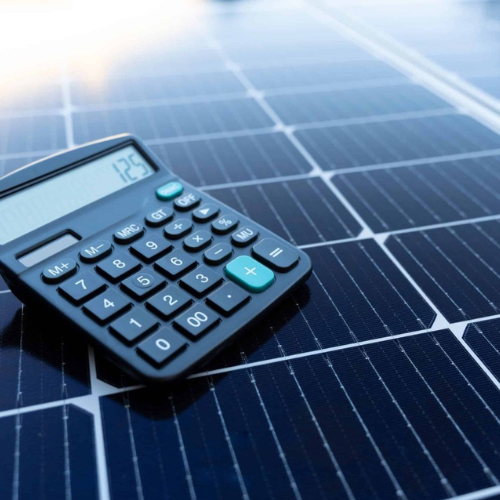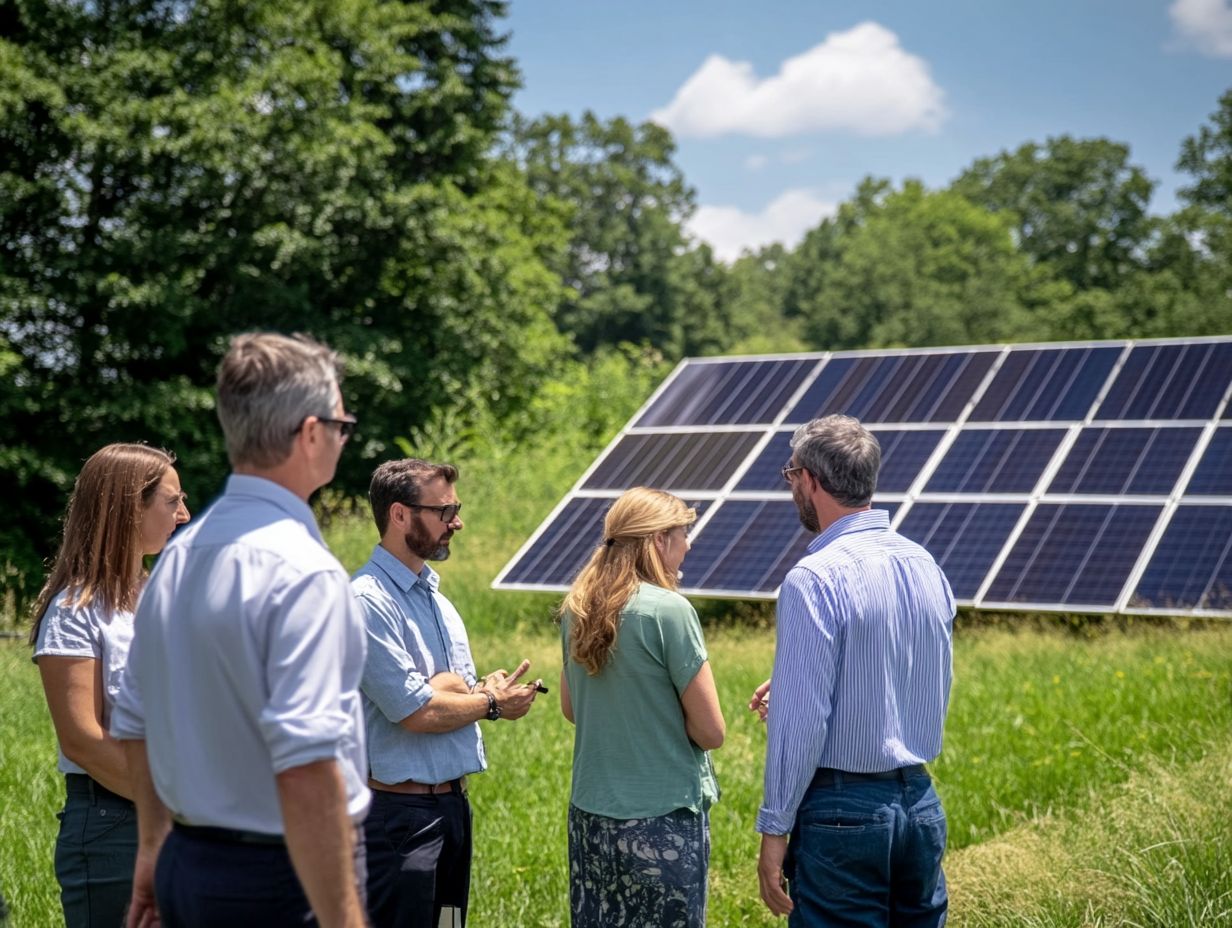Contents
- 1 Key Benefits of Smart Home Integration with Solar Energy
- 2 How to Integrate Solar Energy into a Smart Home
- 3 Choosing the Right Solar Energy System for Your Smart Home
- 4 Integrating Smart Home Automation with Solar Energy Management
- 5 Potential Challenges and Solutions for Smart Home Integration and Solar Energy
- 6 Smart Home Integration and Solar Energy: Frequently Asked Questions
- 6.1 What is Smart Home Integration with Solar Energy?
- 6.2 Can I control my solar energy system through a smart home integration system?
- 6.3 Are there any benefits to integrating my smart home with solar energy?
- 6.4 Do I need a special kind of smart home system to work together with my solar energy system?
- 6.5 Can I set up automated routines with my smart home integration and solar energy system?
- 6.6 Will integrating my smart home with solar energy require any additional equipment or expenses?
In today’s world, the exciting combination of smart home technology, IoT devices, and solar energy is transforming how we manage our living spaces and energy consumption, enhancing energy efficiency.
This article takes a closer look at smart home integration and solar energy systems, shining a light on their benefits, like cost savings, energy transition, and the positive environmental impact.
You’ll get a clear guide on how to incorporate solar energy into your smart home, including tips on choosing the right solar panels, smart home ecosystems, and optimizing your energy consumption.
Plus, we’ll tackle common challenges you might face and offer practical solutions, like integration platforms and energy management systems, to ensure you have a seamless and efficient experience.
Get ready to explore this innovative landscape of smart home applications and renewable integration!
What is Smart Home Integration?
Smart home integration is all about connecting various devices and systems in your home to make your life easier, more efficient, and give you better control over your living space. With the latest smart technology and automated systems, you can automate tasks, manage your energy consumption, and enhance your home with IoT devices that actually communicate with each other using wireless technology.
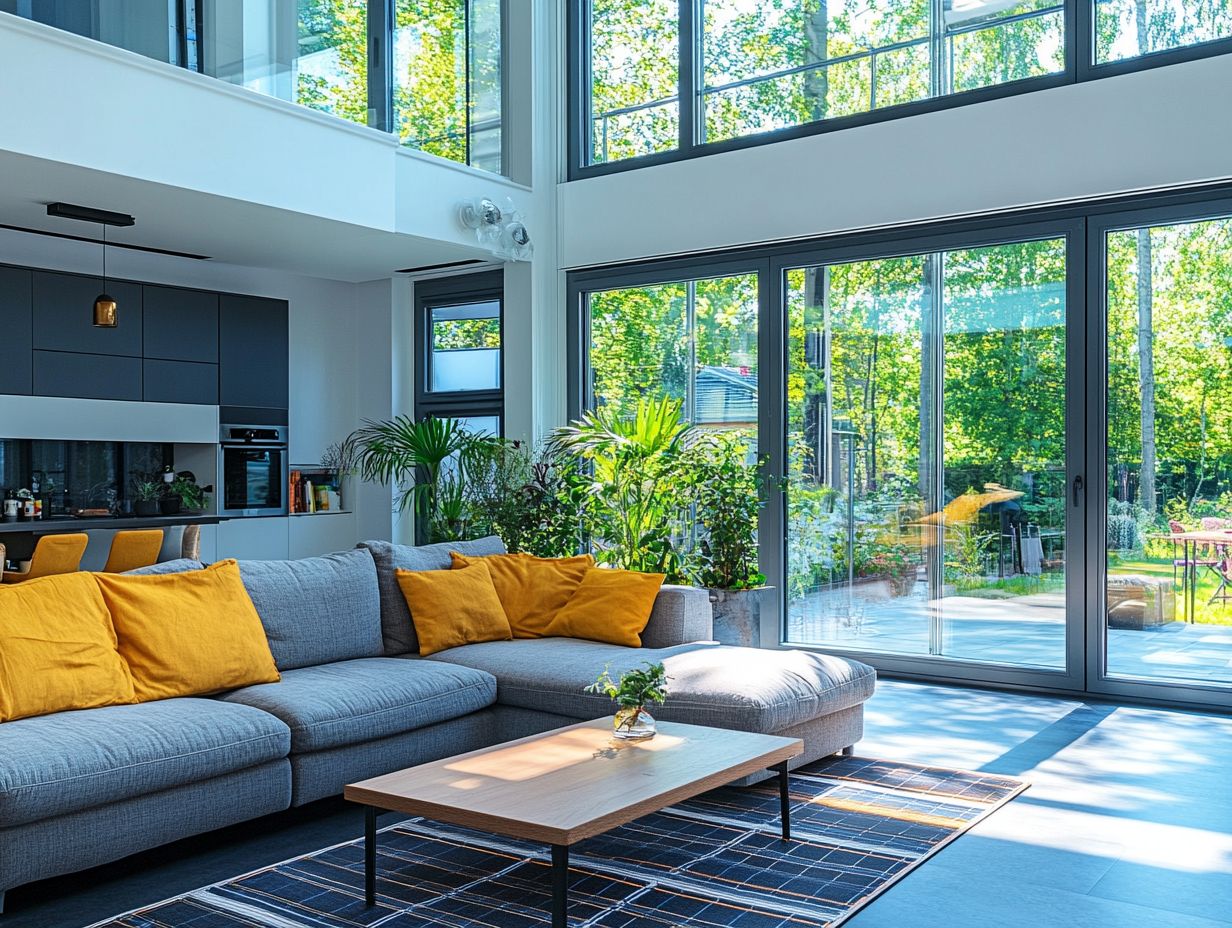
This setup not only makes your experience better, but it also opens the door to energy management solutions and smart control systems that promote sustainability and energy efficiency, helping you maintain a smart home that fits your lifestyle.
Imagine walking into your home on a chilly evening, with smart home features like climate control and energy-efficient appliances ensuring it’s warm and cozy without you having to lift a finger. Smart thermostats can be programmed to adjust the indoor climate just before you get home, employing energy optimization based on your schedule.
And then there’s smart lighting systems and automated lighting, which can sync up with your routine using real-time data. They’ll automatically dim the lights when it’s time to relax and brighten them up in the morning when you need a little extra wake-up call.
Let’s not forget about safety—smart home security systems can send real-time alerts to your smartphone if anything unusual happens, providing remote access and letting you keep an eye on your home from just about anywhere.
All these interconnected devices work together within a smart home ecosystem to create a harmonious living space that prioritizes your comfort, security, and sustainable living.
Wilson, C., Hargreaves, T., & Hauxwell-Baldwin, R. (2015). Smart homes and their users: a systematic analysis and key challenges. Personal and Ubiquitous Computing, 19(2), 463-476. Link
What is Solar Energy?
Solar energy is that radiant light and heat coming straight from the sun, and you can harness it using various technologies, especially solar panels, photovoltaic cells, and solar battery storage systems. This renewable energy source has become super popular because it lets you generate electricity, gain energy independence, and reduce utility bills, all while contributing to a more sustainable and eco-friendly future.
When you convert sunlight into usable energy, you’re not just slashing your energy costs; you’re also helping the shift towards cleaner energy solutions and renewable integration, which are essential parts of modern energy management.
But the cool thing is, the applications of solar energy go way beyond just powering homes and include smart energy solutions. Think about solar water heating systems or even solar-powered vehicles—these really show off its versatility.
By using solar panels and integrating smart appliances, both you and businesses can reduce utility bills and cut down reliance on fossil fuels. Plus, these solar power systems are key players in slashing greenhouse gas emissions and fighting climate change.
For example, large-scale solar farms can crank out a ton of electricity, delivering clean energy to thousands of households. And let’s not forget about innovative solutions like solar rooftops and solar chargers for mobile devices, making it super convenient for everyday life.
By embracing solar energy technologies, you’re making a big move toward a sustainable future.
Key Benefits of Smart Home Integration with Solar Energy
Integrating smart home technology with solar energy systems can bring you a ton of benefits, including demand response and energy monitoring, that boost both energy efficiency and sustainability in your home.
By using smart home systems alongside solar panels and other renewable energy solutions, you can optimize your energy consumption, improve home performance, save a good chunk of change on your utility bills, and do your part for a greener planet.
Explore how you can start integrating smart home technology and solar energy into your life today!
This dynamic duo lets you monitor your energy usage in real-time using energy analytics, giving you the power to make informed choices about your consumption habits—all while enjoying the ease of home automation and digital assistants.
Cost Savings and Environmental Benefits
One of the biggest perks of merging smart home technology with solar energy is the impressive cost savings and efficient load monitoring you can enjoy over time. By tapping into renewable energy like solar power and using energy-efficient practices with smart tech, you can lower your energy bills, engage in energy conservation, and shrink your carbon footprint.
This two-pronged approach not only boosts your overall energy efficiency and home comfort but also does a solid favor for the environment by cutting down on fossil fuel reliance and reducing greenhouse gas emissions.
Smart meters and smart thermostats, along with smart plugs, are essential players in this energy-efficient game. They let you monitor and control your energy consumption in real time, using energy usage data to help you use energy when it’s most cost-effective. For example, smart thermostats and smart window treatments can automatically tweak the temperature based on your schedule and energy forecasting. This keeps you comfy and prevents you from wasting energy unnecessarily.
In the long run, the financial benefits of these systems can be pretty significant, letting you recover your investments through lower energy bills and efficient energy production. Plus, using solar energy along with these smart devices helps lighten the load on the electricity grid through smart grid technology, paving the way for a cleaner and more sustainable environment for future generations.
How to Integrate Solar Energy into a Smart Home

Integrating solar energy into your smart home involves following strategic steps to maximize both energy generation and consumption efficiency.
First, take a look at your energy needs, conduct an energy audit, and think about installing solar panels that fit your home’s capacity for generating renewable energy. On top of that, consider adding smart energy management systems, battery setups, and home network integration.
These can store any extra energy you generate during those sunny peak hours, allowing load balancing and making sure you have power when you need it most. This way, you’re boosting your home’s energy independence, resilience, and scalability!
Key Components and Installation Process
To successfully integrate solar energy into your smart home, you’ll need to consider a few key components like solar panels, smart energy management systems, smart controllers, and grid connection to make everything run smoothly.
The installation process kicks off with picking the right solar power system and programmable devices tailored to your home’s energy needs. You might want to consult with professionals to ensure that everything is placed and configured just right.
By integrating smart home systems and smart home integration platforms, you can boost the functionality of your solar energy setup. This allows you to monitor everything remotely, analyze your energy consumption in real-time, and utilize energy forecasting. Don’t forget about solar inverters and grid connection—they’re essential because they convert the direct current generated by your solar panels into the alternating current that your home appliances can actually use.
Battery systems are crucial components since they store any excess energy you generate, providing demand-side management and allowing you to use it during peak hours or even during a power outage.
While some parts of the installation could involve simple DIY tasks, like mounting the solar panels and connecting them to the inverter, it’s usually a smart move to get professionals involved for the electrical work, ensuring energy resilience and compliance with energy policy. This ensures everything is safe and complies with local regulations.
Lastly, smart home hubs can tie everything together, creating a unified control system that connects all your devices, optimizes your energy usage through automated settings, and facilitates home energy management.
Choosing the Right Solar Energy System for Your Smart Home
Choosing the right solar energy system for your smart home is key to maximizing energy efficiency and meeting your household’s energy needs.
You’ll want to think about a few factors, like the energy output and solar capacity you actually need based on your energy consumption, the type of solar panels that work best for you, and the overall design of solar power systems that fit your living space.
By taking the time to evaluate these elements, including demand response and home comfort, you can make smart choices that not only help cut down on energy costs but also boost your home’s sustainability through effective energy management.
Factors to Consider
When you’re selecting a solar energy system for your smart home, there are several key factors to consider that will influence your decision: budget, energy efficiency, home scalability, and installation requirements. Understanding your financial constraints and energy tariffs can really help narrow down your options, and by prioritizing energy-efficient technologies, you’ll ensure you’re getting the most out of renewable energy.
Plus, don’t forget to think about how easy it will be to install and whether it’s compatible with your existing smart home systems.
When budgeting for solar energy systems, and considering solar energy incentives, it’s not just about the initial investment. You should also look into available incentives and financing options that could significantly lower those upfront costs.
As you evaluate installation expenses, make sure to get multiple quotes from certified installers to get a feel for the market rate, and remember to factor in any potential renovations, including smart home design, your home might need to fit the new system.
The long-term benefits of these energy-efficient choices go beyond just saving money; they also help reduce your carbon footprint, boost your energy independence, and contribute to environmental impact mitigation.
By picking the right system, you can enjoy lower monthly energy bills, better home comfort, and play a part in creating a more sustainable future, which is becoming increasingly important in today’s energy-conscious world.
Integrating Smart Home Automation with Solar Energy Management
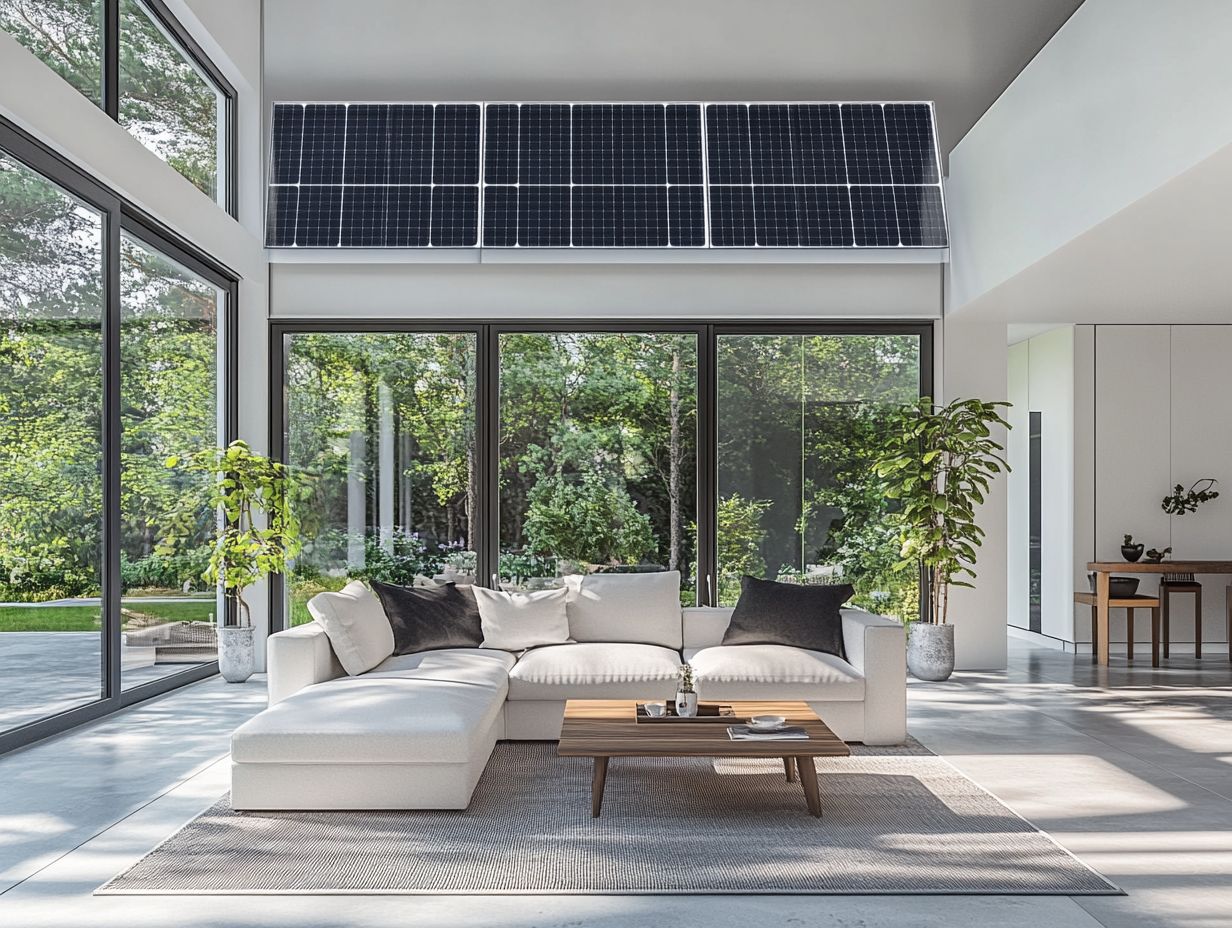
Smart home automation is a game changer when it comes to optimizing your solar energy management. It lets you monitor and control your energy usage effectively.
By using smart energy management systems and real-time data analytics, you can fine-tune how you consume energy and really maximize the efficiency of your solar power systems. This integration boosts your energy efficiency and helps you live a more sustainable lifestyle by ensuring you use energy wisely and only when you really need it.
Optimizing Energy Usage and Efficiency
Optimizing your energy usage and efficiency is key to getting the most out of integrating solar energy into your smart home. By using smart energy solutions like smart appliances and energy-efficient lighting, you can cut down on energy consumption and make better use of solar power. With smart home automation, you can set up custom schedules and scenarios that fit your lifestyle, ensuring you use energy resources efficiently and sustainably.
But it doesn’t stop there. Utilizing smart sensors gives you real-time insights into your energy usage, so you can make adjustments on the fly. For example, with temperature sensors, you can fine-tune your thermostat settings based on whether a room is occupied, minimizing wasted energy when no one is around.
Plus, leveraging data analytics from these systems helps you spot trends and patterns in your energy consumption, enabling you to make informed decisions. By adjusting your settings based on real-time data, you not only boost efficiency but also lower your energy bills, proving that smart technology really enhances everyday living.
Potential Challenges and Solutions for Smart Home Integration and Solar Energy
Integrating smart home technology with solar energy can offer you plenty of benefits, but you might run into a few challenges along the way that will need some smart solutions.
Common issues you could face include:
- Compatibility between devices
- Complexities during installation
- Ongoing maintenance of both your smart home systems and solar power setup
By tackling these challenges head-on and having some troubleshooting strategies in your back pocket, you can achieve a smooth integration that boosts your home’s energy management and sustainability. Addressing these challenges is essential for ensuring effective integration.
Wilson, C., Hargreaves, T., & Hauxwell-Baldwin, R. (2015). Smart homes and their users: a systematic analysis and key challenges. Personal and Ubiquitous Computing, 19(2), 463-476. Link
Addressing Common Issues and Troubleshooting Tips
Addressing common issues that pop up during smart home integration with solar energy is crucial for keeping everything running smoothly and efficiently. You might run into device compatibility problems, network connectivity hiccups, or energy management concerns that can throw a wrench in the seamless operation of your smart home systems.
But don’t worry—with a few troubleshooting tips and regular system checks, you can tackle these challenges and ensure you have a reliable and efficient energy solution.
Homeowners often encounter typical problems, like smart devices that just won’t communicate or networks that decide to drop connections out of nowhere. Making sure your solar energy system is properly integrated with your existing devices can be tricky, especially if they’re from different manufacturers.
To keep things on track, regularly updating firmware, ensuring all wiring connections are solid, and monitoring your energy consumption patterns will help ease most concerns.
By doing routine maintenance checks and checking compatibility lists before you buy new devices, you can optimize your systems and really enjoy the full perks of smart home technology combined with solar energy.
Smart Home Integration and Solar Energy: Frequently Asked Questions
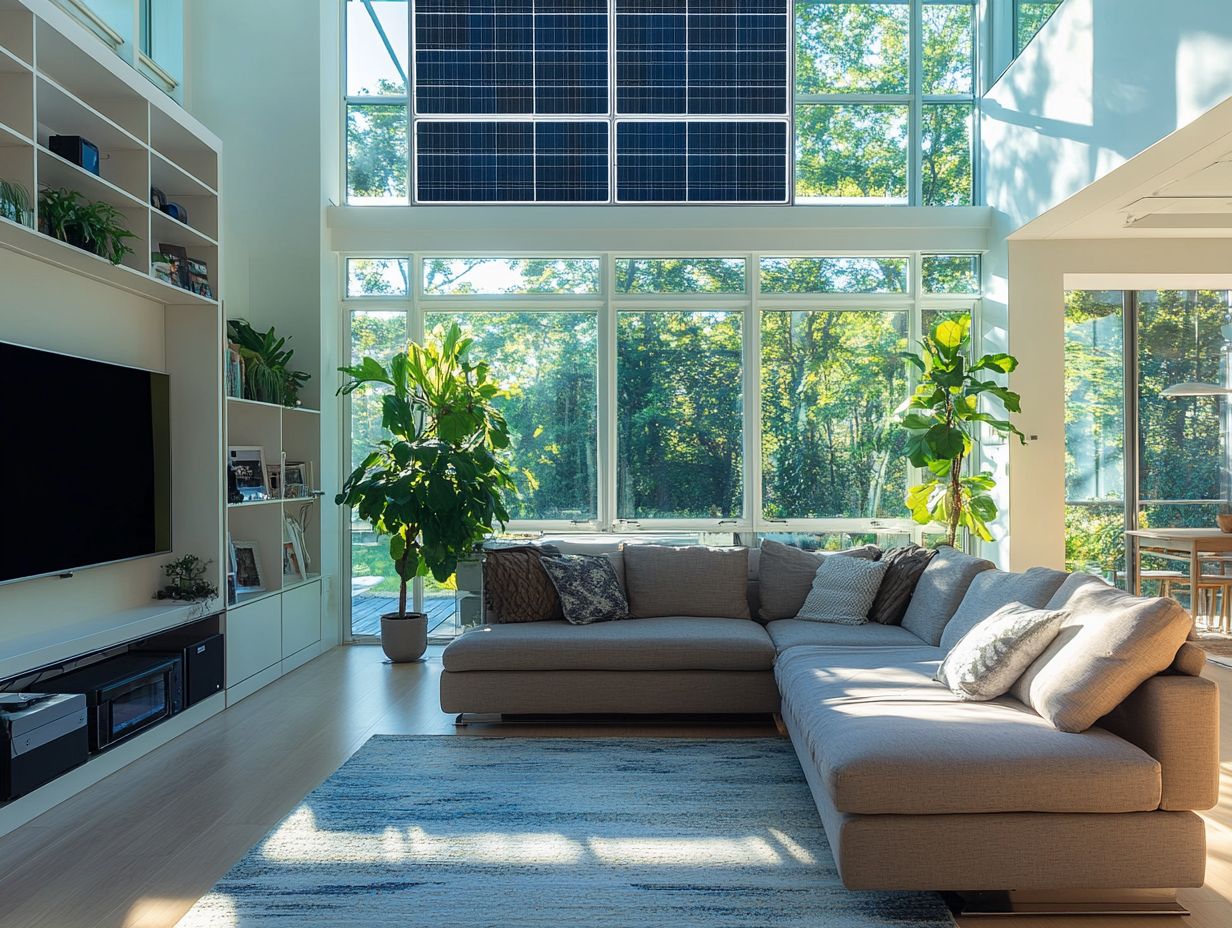
What is Smart Home Integration with Solar Energy?
Smart home integration is the process of connecting different devices and systems within a home to be controlled and automated through a central hub. This can include lighting, appliances, security systems, and more. When combined with solar energy, smart home integration allows for the efficient use of renewable energy and the ability to monitor and manage energy consumption.
Can I control my solar energy system through a smart home integration system?
Yes, most modern solar energy systems are equipped with the ability to connect to a smart home integration system. This allows you to monitor and control your solar energy production and usage in real-time, making it easier to optimize your energy consumption and savings.
Are there any benefits to integrating my smart home with solar energy?
Yes, there are many benefits to integrating your smart home with solar energy. This includes increased energy efficiency, cost savings on your electricity bills, and the convenience of managing all your home’s systems through one central hub.
Do I need a special kind of smart home system to work together with my solar energy system?
No, you do not need a special kind of smart home system to work together with your solar energy system. As long as your smart home system is compatible with the devices in your home, it can be used to control and monitor your solar energy production and usage.
Can I set up automated routines with my smart home integration and solar energy system?
Yes, one of the main benefits of smart home integration with solar energy is the ability to set up automated routines. This can include turning on and off lights based on sunlight levels, adjusting thermostat settings based on outdoor temperature, and more.
Will integrating my smart home with solar energy require any additional equipment or expenses?
It depends on your current setup, but in most cases, integrating your smart home with solar energy will not require any additional equipment or expenses. However, if you want to add more advanced features or controls, you may need to invest in additional devices or upgrades.
This promotes sustainability and energy savings.


